| 08:30 |
Registration
|
| 09:00 |
President’s Introduction (audio feed from Room A)
Craig Parker 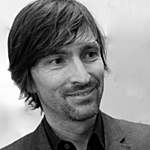 Craig Parker has been involved in surgical dentistry for over 25 years. He runs a private referral practice in Leeds, where the majority of his work is in implant dentistry. He has been actively involved in the Faculty of General Dental Practice (UK) at the Royal College of Surgeons where he was on the board of examiners for over 10 years and he was elected to the national board where he served for 3 years. He has trained with some of the most respected implantologists in the world including Professor Buser at the University of Bern, Switzerland. He is a member, accredited mentor and speaker with the International Team for Implantology (ITI). Craig is President of the Association of Dental Implantology where he has been on the national board for five years. Craig’s special interest is in digital workflow in dental implantology: using ultra-precision digital treatment planning, cone beam CT imaging, digital intra-oral scanning and CAD-CAM restoration to maximise hard and soft tissue aesthetics and functionality. He regularly lectures to various study groups and diploma and MSc programmes in the UK and occasionally at national and international dental congresses. Craig Parker has been involved in surgical dentistry for over 25 years. He runs a private referral practice in Leeds, where the majority of his work is in implant dentistry. He has been actively involved in the Faculty of General Dental Practice (UK) at the Royal College of Surgeons where he was on the board of examiners for over 10 years and he was elected to the national board where he served for 3 years. He has trained with some of the most respected implantologists in the world including Professor Buser at the University of Bern, Switzerland. He is a member, accredited mentor and speaker with the International Team for Implantology (ITI). Craig is President of the Association of Dental Implantology where he has been on the national board for five years. Craig’s special interest is in digital workflow in dental implantology: using ultra-precision digital treatment planning, cone beam CT imaging, digital intra-oral scanning and CAD-CAM restoration to maximise hard and soft tissue aesthetics and functionality. He regularly lectures to various study groups and diploma and MSc programmes in the UK and occasionally at national and international dental congresses.
Qualifications: BChD MFGDP (UK) DPDS |
| 09:10 |
Monitoring and Maintaining Implants: A Practical and Evidence Based Perspective from the Front Line We are members of a team that hosts a variety of specialists and GDPs. This group boasts a hygienist to dentist ratio of 1:1. This has been key in developing an approach that allows shared responsibility of patient care. This novel team approach has developed organically and has become an unexpected success in the team’s efforts to stabilise a high number of patients (often referrals) who present with periodontitis, undergo implant treatment or develop peri-implant disease. We wish to share our experiences to demonstrate the value of true collaboration and shared leadership within the dental team.
Harney-James
|
| 09:35 |
Is Pink the Biz for Successful Implant Therapy? With a dramatic evolution of dental implants over the past decade our expectations, especially in terms of function and aesthetics, have also evolved with it. Clinicians have evolved having a greater appreciation of the importance of establishing a stable peri-implant soft tissue environment. In the beginning of implant evolution, we focused on fancy flap designs that would ensure good aesthetic results. But we perhaps forgot about other factors such as the history that led to the tooth loss. The importance of periodontal phenotype too was largely unrecognised. There may be lack of consensus in the implant literature about the need for attached gingiva and implant restoration, but its presence does appear to decrease soft tissue-related complications and restorative dentists agree that they find it facilitates their process. This presentation is aimed at addressing questions about the importance of the ‘pink’ – the implant soft tissue management which begins with extraction.
Nik Pandya 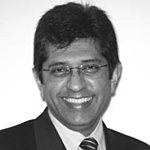 Nik, a graduate of Newcastle University, is a Registered Specialist in Periodontics and an implant surgeon. He juggles clinical and academic careers, being a lead clinician of a busy referral practice in Colchester and a part time Postgraduate Clinical Lecturer/Tutor in Periodontology at Queen Mary School of Dentistry, Senior Clinical Lecturer and Programme Lead (Periodontology), University of Essex and a Visiting Professor and programme lead for MClinDent (Periodontology) at BPP University. Apart from being a member of the Periodontal Academy of the BSP, he is also a member of ADI, AAP, and ICOI. As an implant surgeon he works with other local specialists in prosthodontics for carrying out advanced restorative treatments. Together with an orthodontist and a prosthodontist colleague Nik completes the team delivering much needed care at the Hypodontia Clinic in Colchester. Aside of his clinical duties, Nik is actively involved with BSP, FGDP, Essex branch of BDA and the Essex LPN (Local Practitioner Network). He has a passion for teaching and is involved in many local and national courses. His research interests lie in guided bone and tissue regeneration, laser therapy and local antimicrobial delivery/therapy. Nik, a graduate of Newcastle University, is a Registered Specialist in Periodontics and an implant surgeon. He juggles clinical and academic careers, being a lead clinician of a busy referral practice in Colchester and a part time Postgraduate Clinical Lecturer/Tutor in Periodontology at Queen Mary School of Dentistry, Senior Clinical Lecturer and Programme Lead (Periodontology), University of Essex and a Visiting Professor and programme lead for MClinDent (Periodontology) at BPP University. Apart from being a member of the Periodontal Academy of the BSP, he is also a member of ADI, AAP, and ICOI. As an implant surgeon he works with other local specialists in prosthodontics for carrying out advanced restorative treatments. Together with an orthodontist and a prosthodontist colleague Nik completes the team delivering much needed care at the Hypodontia Clinic in Colchester. Aside of his clinical duties, Nik is actively involved with BSP, FGDP, Essex branch of BDA and the Essex LPN (Local Practitioner Network). He has a passion for teaching and is involved in many local and national courses. His research interests lie in guided bone and tissue regeneration, laser therapy and local antimicrobial delivery/therapy.
Qualifications: BDS (U’Ncle) MSc (ULond) DGDP (UK)
|
| 10:00 |
The Periodontally Compromised are Still Being Rejected for Dental Implants. Should They Be? Periodontally compromised patients: are they to be rejected for dental implants? Patients with a history of periodontal disease, whether suffering Chronic Adult Periodontitis or Generalised Aggressive Periodontitis remain problematic for dental implant therapy. These ‘rejections’ will be due to the correctly perceived problems associated with horizontal and vertical bone loss, loss of interdental bone support that is required for papillary support, gingival recession that is present at adjacent natural teeth, and the spread of periodontal disease from the adjacent teeth. However, implant treatment in such patients is not contraindicated provided adequate infection control and individualized maintenance programs are carried out. This author will show at least 20 extreme cases in a ‘step-by-step’ presentation of bone and soft tissue regeneration that have optimal labial morphology, with gingival tissues that match the adjacent teeth, with follow-ups ranging from 12-96 months.
Shane McCrae 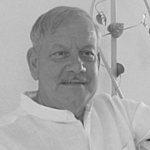 Shane graduated from The Royal Dental Hospital, University of London in 1979 with BDS, LDSRCS(Eng). In 1994, he gained the Specialist Certificate in Dental Radiology from the University of Essen. He received the MFGDP, RCS (Eng) in 2003. In 2005, he completed an MSc (Dental and Maxillofacial Radiology) at KCL, the dissertation “Selection criteria for imaging prospective implant sites – a critical review” was published in the BDJ (June 2008). Since then he has had 31 publications in peer-reviewed journals. In 2010, he concluded a MMedSci Degree in Dental Implantology at the University of Sheffield, the dissertation being “Outcome analysis of immediately loaded dental implants – a systematic review of the literature”. During 2014, his 3rd. Masters degree: MSc in Stem Cells and Tissue Regeneration was awarded to him from the University of Bristol, the dissertation being “What are the key changes in cellular metabolism that mediate the production of induced pluripotent stem cells (iPSCs) and are iPSCs distinguishable from embryonic stem cells?” Today, he peer reviews for 16 journals. Shane graduated from The Royal Dental Hospital, University of London in 1979 with BDS, LDSRCS(Eng). In 1994, he gained the Specialist Certificate in Dental Radiology from the University of Essen. He received the MFGDP, RCS (Eng) in 2003. In 2005, he completed an MSc (Dental and Maxillofacial Radiology) at KCL, the dissertation “Selection criteria for imaging prospective implant sites – a critical review” was published in the BDJ (June 2008). Since then he has had 31 publications in peer-reviewed journals. In 2010, he concluded a MMedSci Degree in Dental Implantology at the University of Sheffield, the dissertation being “Outcome analysis of immediately loaded dental implants – a systematic review of the literature”. During 2014, his 3rd. Masters degree: MSc in Stem Cells and Tissue Regeneration was awarded to him from the University of Bristol, the dissertation being “What are the key changes in cellular metabolism that mediate the production of induced pluripotent stem cells (iPSCs) and are iPSCs distinguishable from embryonic stem cells?” Today, he peer reviews for 16 journals.
Qualifications: MMedSci, MSc, MSc, Spec. Cert. Radiol, MFGDP, BDS, LDSRCS.
|
| 10:25 |
Panel Discussion
Moderator and preceding speakers
|
| 10:40 |
Tea/Coffee & Exhibition
|
| 11:00 |
The Microbiology of Peri-Implantitis: Similar or Distinct to Periodontitis? Peri-implantitis is an increasingly common disease that can affect the long term prognosis of dental implants. The microbes implicated in this pathology have historically been thought to match the microbial profile of periodontitis. Recent research suggests the reality may be slightly more nuanced than this, having reported differences between the microbiology of peri-implantitis and periodontitis. A literature review was undertaken investigating microbiology of peri-implantitis, thereby determining the role of periodontal pathogens in this process, as well as ascertaining how advances in microbe detection techniques have shaped our understanding of the topic. Red and orange complex periodontal pathogens appear to be strongly associated with peri-implantitis, while non-periodontal microbes have also been detected in some cases. There is growing evidence - especially using the latest microbe detection techniques - that the failing periodontal and peri-implant pockets harbour their own distinct microbial profiles, which is of clinical significance when determining suitable antimicrobial therapy.
Aneel Jabbar 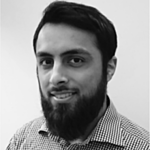 Aneel qualified at the University of Bristol in 2010 and has worked in Bristol and the surrounding areas ever since. He developed an early interest in dental implants and peri-implantitis, taking a prize-winning elective project as an undergraduate which involved molecular analysis on plaque samples taken from failing implant sites. He subsequently returned to the university to complete a Masters degree in Dental Implantology. The topic of his dissertation thesis - the microbiology of peri-implantitis - won the scientific poster prize at the ADI Team Congress 2017. Aneel qualified at the University of Bristol in 2010 and has worked in Bristol and the surrounding areas ever since. He developed an early interest in dental implants and peri-implantitis, taking a prize-winning elective project as an undergraduate which involved molecular analysis on plaque samples taken from failing implant sites. He subsequently returned to the university to complete a Masters degree in Dental Implantology. The topic of his dissertation thesis - the microbiology of peri-implantitis - won the scientific poster prize at the ADI Team Congress 2017.
Qualifications: BDS MJDF RCS (Eng) MSc (Dental Implantology)
|
| 11:25 |
The Antimicrobial Effects of Graphene - A Literature Review Graphene is a recently discovered material that won researchers a Nobel Prize in 2010. Despite being the thinnest and lightest existing material, it possesses excellent strength and high flexibility. Graphene is produced from graphite and has a number of derivatives. It has been claimed that graphene has antimicrobial properties, which may be of great value in dentistry. This study aims to extrapolate currently available literature on the antimicrobial properties of the graphene family. Standard reproducible method for literature review was employed. Three possible antimicrobial mechanisms for graphene were reported: (1) bacterial cell wall disruption upon interaction with the sharp edges of graphene; (2) entrapment of microorganisms within the graphene oxide sheets; and (3) induction of oxidative stress by reactive oxygen species and lipid peroxidation. There is no conclusive theory to explain the antimicrobial effect of graphene, calling for additional research to guide clinicians towards its potential scope in the dental field.
Thiri Lwin  She graduated Bachelor of Dental Surgery from University of Dental Medicine, Yangon, Myanmar in 2012. She obtained the Diploma of Dental Science from the same university in 2014. She has worked for the Myanmar Dental Council since she graduated. In 2015, she won the Presidential Scholarship from her country and had a chance to study in the UK. Currently, she is attending final year in her Master of Clinical Dentistry (Implantology) at BPP University, UK. Her main interest is in implantology and oral surgery. She is always interested in finding new materials which will be beneficial for implant dentistry. She graduated Bachelor of Dental Surgery from University of Dental Medicine, Yangon, Myanmar in 2012. She obtained the Diploma of Dental Science from the same university in 2014. She has worked for the Myanmar Dental Council since she graduated. In 2015, she won the Presidential Scholarship from her country and had a chance to study in the UK. Currently, she is attending final year in her Master of Clinical Dentistry (Implantology) at BPP University, UK. Her main interest is in implantology and oral surgery. She is always interested in finding new materials which will be beneficial for implant dentistry.
Qualifications: BDS, Dip.D.Sc
|
| 11:50 |
Particulate Graft Stabilisation - A Solution to Grafting Outside the Boney Envelope? I will explore the application of tenting sutures in synthetic particulate grafts to enable the predictable treatment of cases where more invasive methods would have traditionally been needed. Cases with no mechanical retention for the graft, or where the arch form pulls on the graft, can be challenging to treat because of slumping of the material. This method of graft support may offer a solution that is simple and predictable - and cost effective.
Michael Ainsworth 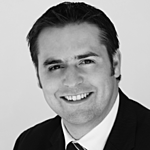 Dr Ainsworth qualified from Birmingham in 2002 and went straight into private practice. His exposure to implant dentistry was immediate and began restoring implants in his first year out from university. He started placing simple implants very soon and enrolled in a 1 year Diploma course in 2003-4. Since this time Dr Ainsworth has developed an interest in synthetic materials for grafting, using them exclusively since 2007. Dr Ainsworth maintains a private practice limited to dental implant treatments in Yorkshire. Dr Ainsworth qualified from Birmingham in 2002 and went straight into private practice. His exposure to implant dentistry was immediate and began restoring implants in his first year out from university. He started placing simple implants very soon and enrolled in a 1 year Diploma course in 2003-4. Since this time Dr Ainsworth has developed an interest in synthetic materials for grafting, using them exclusively since 2007. Dr Ainsworth maintains a private practice limited to dental implant treatments in Yorkshire.
Qualifications: BDS (U.Birm)
|
| 12:15 |
Panel Discussion
Moderator and preceding speakers
|
| 12:30 |
Lunch & Exhibition
|
| 13:15 |
AGM (in Room A)
|
| 13:45 |
An Audit of 110 Full Arch Immediate Loaded Implant Cases Demonstrating High Success Rate Using a Validated Risk Assessment Tool A retrospective audit was carried out on 110 full arch immediate loaded implant cases in a practice setting over 4 years. A total 462 implants were placed. The cases were delivered by a specialist max-fax surgeon, an implant trained GDP team and a dedicated on-site laboratory. A calibrated risk assessment tool from the Kois centre in Seattle, comprehensive pre-assessment and high standards of teamwork along with good follow up rates have resulted in an overall implant success rate of 98% on early and late retention. Prosthesis complication rates were less than 10% for both temporary and permanent restorations. The types of error and failures were recorded and the author feels that sharing these issues would be useful. The success rates could be attributed to the experience of the surgeon but a good team environment with clear communication is an essential part of delivering more complex, immediate full arch implant dentistry.
Ian Lane 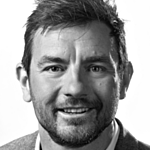 Ian has been a partner at Queensway Dental since 2006 and is responsible for ensuring high standards of dental care for all NHS and private patients. Ian, who has a specialist interest in implant and reconstructive dentistry, has been active in postgraduate education in this field since attending a Nobel Biocare Implant Introduction in 2002 and also delivers small group teaching to dentists as part of Nobel Biocare's mentor training programme. In 2014, Ian graduated from a comprehensive risk assessment programme in Seattle with one of America's most eminent dentists, Dr John Kois. The programme followed some clear protocols for managing complexity in dental care and allowed Ian to carefully manage some of the most challenging reconstruction cases at his practice. Ian is also a director at Queensway Dental Laboratory and has assisted in bringing the latest products and services for implant dentistry into a new and exciting full service private implant laboratory in conjunction with Nobel Biocare's research and redevelopment team. Ian has been a partner at Queensway Dental since 2006 and is responsible for ensuring high standards of dental care for all NHS and private patients. Ian, who has a specialist interest in implant and reconstructive dentistry, has been active in postgraduate education in this field since attending a Nobel Biocare Implant Introduction in 2002 and also delivers small group teaching to dentists as part of Nobel Biocare's mentor training programme. In 2014, Ian graduated from a comprehensive risk assessment programme in Seattle with one of America's most eminent dentists, Dr John Kois. The programme followed some clear protocols for managing complexity in dental care and allowed Ian to carefully manage some of the most challenging reconstruction cases at his practice. Ian is also a director at Queensway Dental Laboratory and has assisted in bringing the latest products and services for implant dentistry into a new and exciting full service private implant laboratory in conjunction with Nobel Biocare's research and redevelopment team.
Qualifications: Dip SED BDS (Hons) (Ncl) MFGDP MSc Implant, KOIS Graduate
|
| 14:10 |
How Far Can We Push the Envelope with Immediate Provisionalization of Single Tooth Implants Placement into Extraction Sockets, with Low Implant Primary Stability? A Case Report There is currently much debate on the relationship of ISQ and peak insertion torque in the immediate loading of dental implants, with very polarised views prevalent within this field of dentistry. This is a single patient case report illustrating that there may be situations where immediately placed implants inserted at a very low insertion torque into fresh extraction sockets can be successfully provisionalized. This short presentation will include new scientific evidence indicating potential thresholds for primary stability and should fuel much discussion about whether 'tight is right'. Further the lecture will provide information on a current study, by the presenter, looking at implant stability into grafted sockets.
Stephen Jacobs 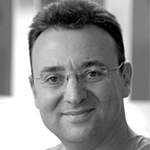 Stephen Jacobs qualified from Birmingham University in 1985 and went into general dental practice. He started in implant dentistry in 1991 and since then has devoted his career to the practice of implant dentistry, and he is regarded as one of the foremost implant surgeons in the United Kingdom. His training was carried out in the UK, USA and Europe and he now lectures extensively on all aspects of dental implantology throughout the United States, Asia, Continental Europe and the UK. Stephen runs his implant referral practice in Glasgow, UK, where all aspects of implant and reconstructive dentistry are carried out. Stephen is a Key Opinion Leader and Ambassador for Dentsply Implants and Osstell. Stephen is a Past President of the Association of Dental Implantology UK (ADI) and a committee member and Fellow of the Academy of Osseointegration, and the UK Ambassador for AO. He is a founding Board member of PEERS UK, and is the Past Scientific Chairman of the ADI. He is on the editorial board of three journals and runs a variety of courses at his practice, including a comprehensive year course for those willing to get started in the field of implantology, sinus grafting and restorative programs. Stephen currently mentors several dentists and is experienced with many implant systems. Stephen Jacobs qualified from Birmingham University in 1985 and went into general dental practice. He started in implant dentistry in 1991 and since then has devoted his career to the practice of implant dentistry, and he is regarded as one of the foremost implant surgeons in the United Kingdom. His training was carried out in the UK, USA and Europe and he now lectures extensively on all aspects of dental implantology throughout the United States, Asia, Continental Europe and the UK. Stephen runs his implant referral practice in Glasgow, UK, where all aspects of implant and reconstructive dentistry are carried out. Stephen is a Key Opinion Leader and Ambassador for Dentsply Implants and Osstell. Stephen is a Past President of the Association of Dental Implantology UK (ADI) and a committee member and Fellow of the Academy of Osseointegration, and the UK Ambassador for AO. He is a founding Board member of PEERS UK, and is the Past Scientific Chairman of the ADI. He is on the editorial board of three journals and runs a variety of courses at his practice, including a comprehensive year course for those willing to get started in the field of implantology, sinus grafting and restorative programs. Stephen currently mentors several dentists and is experienced with many implant systems.
Qualifications: BDS MJDF RCS (Eng)
|
| 14:35 |
Full Mouth Rehabilitation with Fixed Implant Prostheses on a Patient with Sjögren's Syndrome. A 10 Year Case Report Sjögren's syndrome (SS) is a systemic autoimmune disease that has several oral manifestations, with reduced salivary flow being the most prevalent. As a result of the dry mouth and irritated oral tissues, dental treatment may be challenging. A removable prosthesis may provide limited patient satisfaction. There is a lack of data in the literature relating to long term results on implant patients with SS. This case report describes the outcome of a full mouth implant fixed prostheses on a patient with SS after 12 months in use. From the same case we can provide data, after 10 years on prosthetic function of an implant over denture in the mandible based on four implants. Finally we will examine patient satisfaction regarding the full mouth fixed concept.
Konstantinos Loukas 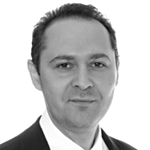 Dr Loukas qualified as a dentist in 2000 and then embarked upon a two-year residency at the Dental School of Athens as a clinical instructor supervising students in the prosthetic department. At the same time, he served in an Airforce Hospital in Athens performing general and prosthetic dentistry. Between 2008 and 2012 he completed a postgraduate training course in Bristol and Bath leading to a MSc in Dental Implantology, with the area of his research surrounding implant complications. In 2017, he completed an implant residency at the University of Berne working with Professor Daniel Buser and Professor Thomas von Arx and will continue his studies this year by progressing to undertake a PhD in Implantology. Having placed and restored over 1500 Straumann implants using the whole range, with a practically perfect integration success rate, his target is to build large bone volumes around his implants and to make sure that implants will last. He has an extensive experience with complex cases and sees and treats a high volume of implant complications on a regular basis. He is an official Straumann UK mentor for South West and Channel Islands, where he trains and mentors other dentists about dental implants. Dr Loukas qualified as a dentist in 2000 and then embarked upon a two-year residency at the Dental School of Athens as a clinical instructor supervising students in the prosthetic department. At the same time, he served in an Airforce Hospital in Athens performing general and prosthetic dentistry. Between 2008 and 2012 he completed a postgraduate training course in Bristol and Bath leading to a MSc in Dental Implantology, with the area of his research surrounding implant complications. In 2017, he completed an implant residency at the University of Berne working with Professor Daniel Buser and Professor Thomas von Arx and will continue his studies this year by progressing to undertake a PhD in Implantology. Having placed and restored over 1500 Straumann implants using the whole range, with a practically perfect integration success rate, his target is to build large bone volumes around his implants and to make sure that implants will last. He has an extensive experience with complex cases and sees and treats a high volume of implant complications on a regular basis. He is an official Straumann UK mentor for South West and Channel Islands, where he trains and mentors other dentists about dental implants.
Qualifications: DMD MSc Bristol
|
| 15:00 |
Panel Discussion
Moderator and preceding speakers
|
| 15:15 |
Tea/Coffee & Exhibition
|
| 15:30 |
Successful Outcome of First Clinical Case of an Adjustable Abutment (Orbital Connector) I brought the question “Can we make an adjustable abutment offering 0°-36° adjustability and selectability” to the ADI National Forum in November 2015. I now report on the outcome of the first clinical case completed early 2017. Six internal connection implants were placed to maximise bone support in a steeply angled maxilla early 2016. Immediate loading/restoration with an acrylic arch and the Orbital Connectors was carried out at the time of placement. The design of the abutment (Orbital Connector) enables the clinician to select the axial (360°) and the vertical (0°-36°) orientation of the angle of the screw retention. The results show successful: osseointegration of all 6 implants; orientation of screw axis for the definitive prosthesis; peri-implant and abutment soft tissue health. This demonstrates the versatility of the OC as an abutment allowing the clinician to place implants for ideal bone support and to orientate screw retention.
W Duncan Robertson 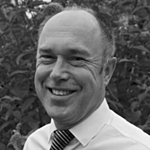 Duncan came to Scotland at the age of 16 and, after two years attending Robert Gordon’s College in Aberdeen, started his dental training in Edinburgh in 1978. After qualification in 1983 and gaining an Edinburgh Medical Faculty Research Fellowship in 1984, Duncan started a Doctorate researching into the “Clinical Pathological and Immunological aspects of Oral Keratoses”. He published a number of research papers and a chapter in Oral Neoplasia before going into practice. His fresh start practice in 1993 has grown steadily and he delivers both surgical and restorative implant care for his patients using PRF, co-axis implants and his invention called the “Orbital Connector”. In 2012, Duncan invented an adjustable abutment for internal connection implants that offers a range of angular screw-retention of 0°-36°. Duncan presented early results of this invention at the AO 2017 and is a member of the AO, ADI, BSOS and the ITI. Duncan came to Scotland at the age of 16 and, after two years attending Robert Gordon’s College in Aberdeen, started his dental training in Edinburgh in 1978. After qualification in 1983 and gaining an Edinburgh Medical Faculty Research Fellowship in 1984, Duncan started a Doctorate researching into the “Clinical Pathological and Immunological aspects of Oral Keratoses”. He published a number of research papers and a chapter in Oral Neoplasia before going into practice. His fresh start practice in 1993 has grown steadily and he delivers both surgical and restorative implant care for his patients using PRF, co-axis implants and his invention called the “Orbital Connector”. In 2012, Duncan invented an adjustable abutment for internal connection implants that offers a range of angular screw-retention of 0°-36°. Duncan presented early results of this invention at the AO 2017 and is a member of the AO, ADI, BSOS and the ITI.
Qualifications: BDS(Edin) MFGDP(UK) FDS RCS(Edin) PhD
|
| 15:55 |
The Effect of Platelet Rich Plasma and Platelet Rich Fibrin on Dimensional Changes in the Alveolar Ridge Post Tooth Extraction – A Narrative Review A systematic literature search was carried out with specific inclusion and exclusion criteria to review the available literature on platelet rich plasma (PRP) and platelet rich fibrin (PRF), and their effect on dimensional changes of the alveolar ridge post tooth extraction. Seven papers were selected for review, four human studies and three animal studies. One human study reported a significant difference in reduction in alveolar ridge resorption with PRF when a flapless technique was used as opposed to normal healing. One animal study also reported significant differences between PRP and surgical grade calcium sulphate (SGCS) in reducing alveolar ridge resorption compared with normal healing. The other studies reported no significant differences between the experimental and control groups. It is concluded that although some studies reported significant differences in dimensional changes of the extraction socket with the addition of PRP/PRF, several confounding factors exist which could influence outcomes.
Neel Shukla 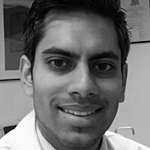 Neel qualified from Barts and the London Dental School in 2008. He has obtained his MJDF qualification from the Royal College of Surgeons of England in 2012 and also a postgraduate certificate in Dental Education from the University of Bedfordshire in 2015. Since 2011, Neel has been concentrating much of his time towards the fascinating world of implant dentistry. He has since obtained a Diploma in Implant Dentistry with distinction from the University of Warwick, and has also completed a MClinDent in Implantology from BPP University. He currently places and restores implants at eight different practices within London and Greater London. He completed his research dissertation on platelet rich plasma and platelet rich fibrin and is currently working towards a publication in this field. Neel qualified from Barts and the London Dental School in 2008. He has obtained his MJDF qualification from the Royal College of Surgeons of England in 2012 and also a postgraduate certificate in Dental Education from the University of Bedfordshire in 2015. Since 2011, Neel has been concentrating much of his time towards the fascinating world of implant dentistry. He has since obtained a Diploma in Implant Dentistry with distinction from the University of Warwick, and has also completed a MClinDent in Implantology from BPP University. He currently places and restores implants at eight different practices within London and Greater London. He completed his research dissertation on platelet rich plasma and platelet rich fibrin and is currently working towards a publication in this field.
Qualifications: BDS (Lond), MJDF RCS (Eng), PG Cert Dent Ed, Dip Implant Dent, MClinDent Implantology
|
| 16:20 |
Nazalus Implant for Full Arch Rehabilitation Rehabilitation of the atrophic maxillary arch is often complicated by anatomical bone restrictions. The concept of angling distal implants to avoid the sinus has been well documented by Krekmanov (2000) and later popularised by Malo as All on 4 technique. This technique relies on sufficient bone in the premolar region. In more extreme atrophy, the anterior wall of the sinus extends more anteriorly to the canine region, leaving insufficient bone for implant placement. Techniques such as pterygoids, zygomatic implants or sinus grafting can be used. A new alternative technique is the Nazalus implant. This implant is angled forward from the pre molar region traversing the anterior sinus cavity, engaging the apex of the implant in the lateral nasal wall in the vomer bone. Longer implants are used for this technique ranging from 20-24mm and restoration is aided by combining with a 24 degree angled implant head. The author will discuss the technique for this procedure including anterior sinus elevation, grafting, implant placement and PRGF, illustrated with clinical case reports.
Guy McLellan 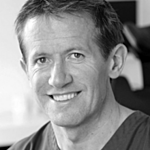 Guy McLellan is doubly qualified in dentistry and medicine and a Fellow of the Royal College of Surgeons of England. He has over 10 years' hospital experience including training in ENT and plastic surgery and currently holds an Honorary Consultant post in Oral Implantology at Charing Cross Hosptial. His experience in implants dates back to 1994 and includes intra and extra-oral implants to retail facial cosmetics/reconstruction following facial cancer surgery as a member of the Cranio-Facial team at Chelsea and Westminster Hospital. In private practice he limits his practice to surgical implantology and augmentation procedures including complex intra-oral and extra-oral grafting. He is a mentor for Nobel Biocare and is actively involved in implant education. He is a member of the Association of Dental Implantology, the European Association of Osseointegration and a Fellow of the International Congress of Oral Implantologists. Guy McLellan is doubly qualified in dentistry and medicine and a Fellow of the Royal College of Surgeons of England. He has over 10 years' hospital experience including training in ENT and plastic surgery and currently holds an Honorary Consultant post in Oral Implantology at Charing Cross Hosptial. His experience in implants dates back to 1994 and includes intra and extra-oral implants to retail facial cosmetics/reconstruction following facial cancer surgery as a member of the Cranio-Facial team at Chelsea and Westminster Hospital. In private practice he limits his practice to surgical implantology and augmentation procedures including complex intra-oral and extra-oral grafting. He is a mentor for Nobel Biocare and is actively involved in implant education. He is a member of the Association of Dental Implantology, the European Association of Osseointegration and a Fellow of the International Congress of Oral Implantologists.
Qualifications: BDS FDS RCS (Eng) MBBS
|
| 16:45 |
Panel Discussion
Moderator and preceding speakers
|
| 17:00 |
Close, followed by Drinks Reception
|